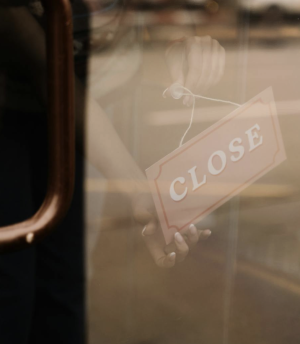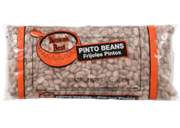An American retail tradition comes to a close after 135 years
By
Veronica E.
- Replies 0
For generations, this store was more than just a place to pick up a prescription or a last-minute gift.
It was a neighborhood fixture, woven into the fabric of daily life, where customers felt known and local products had pride of place on the shelves.
Families often stopped in for familiar treats or quick errands, and many built personal connections with staff who remembered their names.
The aisles reflected a blend of practicality and community spirit, offering both essentials and locally loved items.
Now, after more than a century in business, the lights have gone dark for good, leaving behind memories, community ties, and questions about what the future holds for American pharmacies.
A legacy built on local roots
Founded in 1890 by George H. Bartell Sr., Bartell Drugs grew from a single Seattle storefront into what became the oldest family-owned drugstore chain in the United States.
For decades, it thrived by supporting local vendors, sponsoring community events, and offering a kind of service that felt more like neighborly care than corporate efficiency.
Former regional manager John Lewis once summed it up simply: “We tried to stay local and quirky.” And it worked.
Customers knew they could stop in for a prescription refill, a greeting card, or even a bottle of Washington wine, all while feeling like part of the family.
Also read: CVS-owned pharmacy declares bankruptcy after legal setback—what it means for customers
The domino effect: how the pharmacy industry changed
The closure didn’t happen in a vacuum.
Across the country, the pharmacy industry has been under pressure from changing shopping habits, rising costs, and aggressive competition from big-box stores and online retailers.
In 2020, Rite Aid acquired the chain in hopes of keeping it afloat.
Instead, pandemic disruptions and mounting financial troubles pushed Rite Aid into bankruptcy—twice.
As the company scrambled to survive, the unique identity of the smaller chain eroded.
Stores were rebranded, service slipped, and closures spread.
Even the industry’s giants have faced cutbacks. CVS has announced hundreds of closures, while Walgreens and Rite Aid have shuttered locations across the nation.
Communities that once relied on smaller, familiar chains have found themselves with fewer and fewer options.
Also read: 17 more pharmacy closures announced amid ongoing bankruptcy and healthcare access concerns
The final days: a community says goodbye
For longtime customers, the closures felt deeply personal.
As liquidation banners went up and shelves emptied, shoppers walked the aisles one last time.
Molly Lavinter, who had relied on the stores for years, described it as “watching my childhood go away.”
This summer, CVS absorbed 20 of the remaining locations, transferring prescriptions and rebranding storefronts.
The last 14 pharmacies shut down soon after, and by the time the final three stores closed their doors, the iconic red-and-white signage was already slipping into memory.
Source: Instagram / komo4
Also read: Kroger’s pharmacy problem sparks concern—“This can’t happen again”
Why are so many pharmacies closing?
Several forces are driving this nationwide shift:
Also read: This pharmacy tip slashed this woman's prescription bill to $45—find out how!
What’s next for communities?
The loss of local pharmacies represents more than an inconvenience.
These stores often served as health hubs, providing vaccinations, screenings, and personalized advice.
Without them, vulnerable populations—especially older adults—may find themselves traveling farther or adjusting to busier, less personal alternatives.
Some communities are rediscovering independent pharmacies, which often provide services like medication synchronization, pill packaging, and personalized consultations.
These smaller businesses are becoming a haven for patients looking for the kind of care large chains can’t always offer.
Also read: Are you one of the 1 million? This drugstore announces massive coverage cuts that could leave patients stranded
A look back—and forward
The closure of this 135-year-old institution is a reminder of what made it special: a commitment to community, support for local products, and a belief that a pharmacy could be more than a transactional space.
It was a gathering spot, a neighborhood fixture, and proof that even in an era dominated by corporate giants, smaller traditions could still thrive—if only for a time.
The GrayVine community remembers
At The GrayVine, we know that saying goodbye to a beloved institution is never easy.
But our connections, memories, and stories are what make our communities strong.
Let’s celebrate what was built, support the local businesses still serving us, and look out for one another as the landscape continues to change.
Read next:

Do you remember shopping at this chain? Did you have a favorite product or a staff member who made your visits special? We’d love to hear your stories. Share your thoughts in the comments below so together we can honor its legacy and keep the spirit of community alive.
It was a neighborhood fixture, woven into the fabric of daily life, where customers felt known and local products had pride of place on the shelves.
Families often stopped in for familiar treats or quick errands, and many built personal connections with staff who remembered their names.
The aisles reflected a blend of practicality and community spirit, offering both essentials and locally loved items.
Now, after more than a century in business, the lights have gone dark for good, leaving behind memories, community ties, and questions about what the future holds for American pharmacies.
A legacy built on local roots
Founded in 1890 by George H. Bartell Sr., Bartell Drugs grew from a single Seattle storefront into what became the oldest family-owned drugstore chain in the United States.
For decades, it thrived by supporting local vendors, sponsoring community events, and offering a kind of service that felt more like neighborly care than corporate efficiency.
Former regional manager John Lewis once summed it up simply: “We tried to stay local and quirky.” And it worked.
Customers knew they could stop in for a prescription refill, a greeting card, or even a bottle of Washington wine, all while feeling like part of the family.
Also read: CVS-owned pharmacy declares bankruptcy after legal setback—what it means for customers
The domino effect: how the pharmacy industry changed
The closure didn’t happen in a vacuum.
Across the country, the pharmacy industry has been under pressure from changing shopping habits, rising costs, and aggressive competition from big-box stores and online retailers.
In 2020, Rite Aid acquired the chain in hopes of keeping it afloat.
Instead, pandemic disruptions and mounting financial troubles pushed Rite Aid into bankruptcy—twice.
As the company scrambled to survive, the unique identity of the smaller chain eroded.
Stores were rebranded, service slipped, and closures spread.
Even the industry’s giants have faced cutbacks. CVS has announced hundreds of closures, while Walgreens and Rite Aid have shuttered locations across the nation.
Communities that once relied on smaller, familiar chains have found themselves with fewer and fewer options.
Also read: 17 more pharmacy closures announced amid ongoing bankruptcy and healthcare access concerns
The final days: a community says goodbye
For longtime customers, the closures felt deeply personal.
As liquidation banners went up and shelves emptied, shoppers walked the aisles one last time.
Molly Lavinter, who had relied on the stores for years, described it as “watching my childhood go away.”
This summer, CVS absorbed 20 of the remaining locations, transferring prescriptions and rebranding storefronts.
The last 14 pharmacies shut down soon after, and by the time the final three stores closed their doors, the iconic red-and-white signage was already slipping into memory.
Source: Instagram / komo4
Also read: Kroger’s pharmacy problem sparks concern—“This can’t happen again”
Why are so many pharmacies closing?
Several forces are driving this nationwide shift:
- Changing shopping habits: More Americans now fill prescriptions online or through mail-order programs.
- Rising costs: Expenses for medications, labor, and rent continue to climb, while insurance reimbursements often fail to keep pace.
- Competition: Big-box retailers like Walmart and Target, plus online giants such as Amazon, have muscled into the business.
- Pandemic fallout: COVID-19 disrupted supply chains and changed how people shop for both essentials and healthcare.
Also read: This pharmacy tip slashed this woman's prescription bill to $45—find out how!
What’s next for communities?
The loss of local pharmacies represents more than an inconvenience.
These stores often served as health hubs, providing vaccinations, screenings, and personalized advice.
Without them, vulnerable populations—especially older adults—may find themselves traveling farther or adjusting to busier, less personal alternatives.
Some communities are rediscovering independent pharmacies, which often provide services like medication synchronization, pill packaging, and personalized consultations.
These smaller businesses are becoming a haven for patients looking for the kind of care large chains can’t always offer.
Also read: Are you one of the 1 million? This drugstore announces massive coverage cuts that could leave patients stranded
A look back—and forward
The closure of this 135-year-old institution is a reminder of what made it special: a commitment to community, support for local products, and a belief that a pharmacy could be more than a transactional space.
It was a gathering spot, a neighborhood fixture, and proof that even in an era dominated by corporate giants, smaller traditions could still thrive—if only for a time.
The GrayVine community remembers
At The GrayVine, we know that saying goodbye to a beloved institution is never easy.
But our connections, memories, and stories are what make our communities strong.
Let’s celebrate what was built, support the local businesses still serving us, and look out for one another as the landscape continues to change.
Read next:
- Costco shopper shares “secret code” for cheaper meds—members say they’re stunned
- Why 23 CVS stores are closing—and what it means for your prescriptions
- Major retailers cut key healthcare services—here’s what’s changing and why it matters
Key Takeaways
- A 135-year-old American pharmacy chain has permanently closed its final stores, ending its long-standing role as a community hub.
- The closures followed financial struggles that worsened after its 2020 acquisition by Rite Aid, which has since filed for bankruptcy twice.
- The chain was known for supporting local vendors and events and was recognized as the nation’s oldest family-owned drugstore.
- Broader industry challenges—including shifting shopping habits, rising costs, competition from big-box and online retailers, and the pandemic—contributed to its collapse.
Do you remember shopping at this chain? Did you have a favorite product or a staff member who made your visits special? We’d love to hear your stories. Share your thoughts in the comments below so together we can honor its legacy and keep the spirit of community alive.







